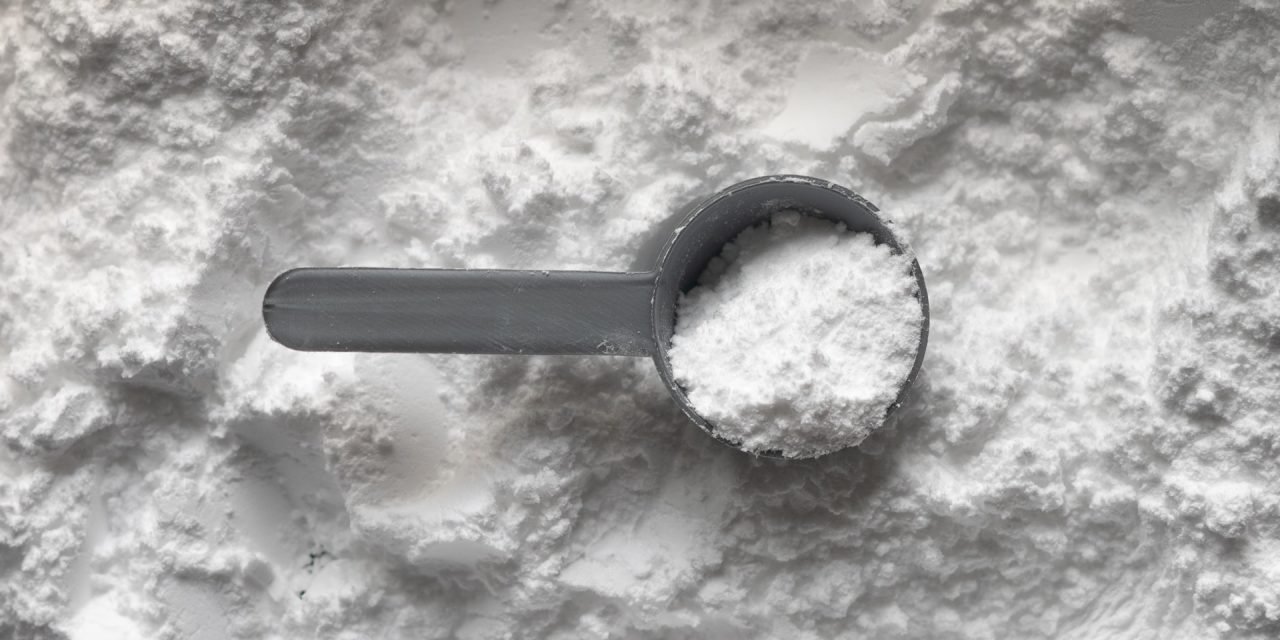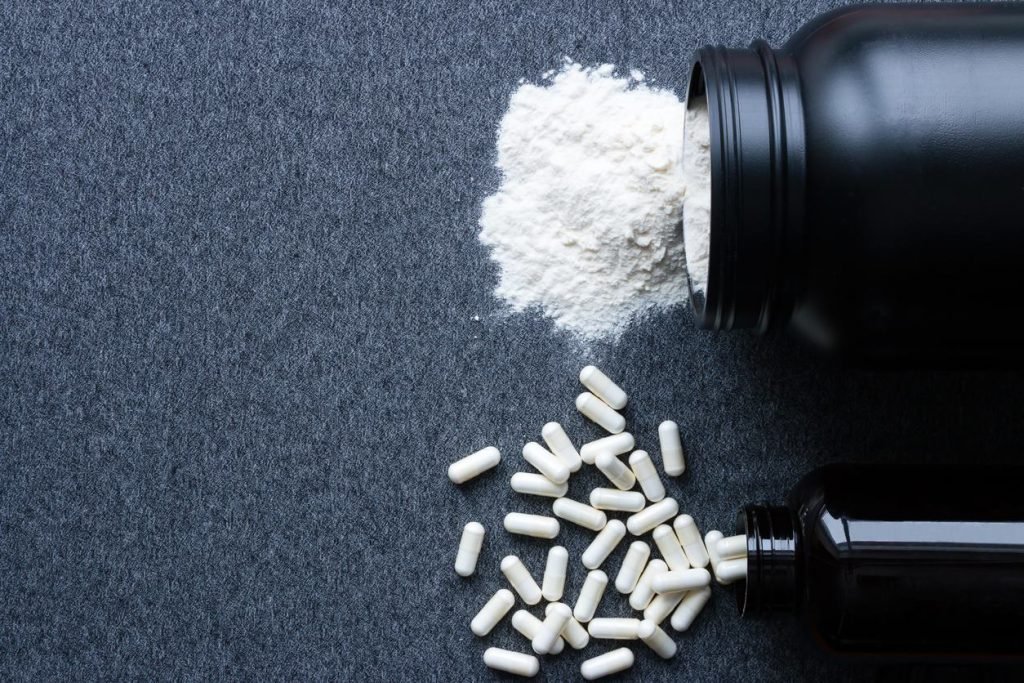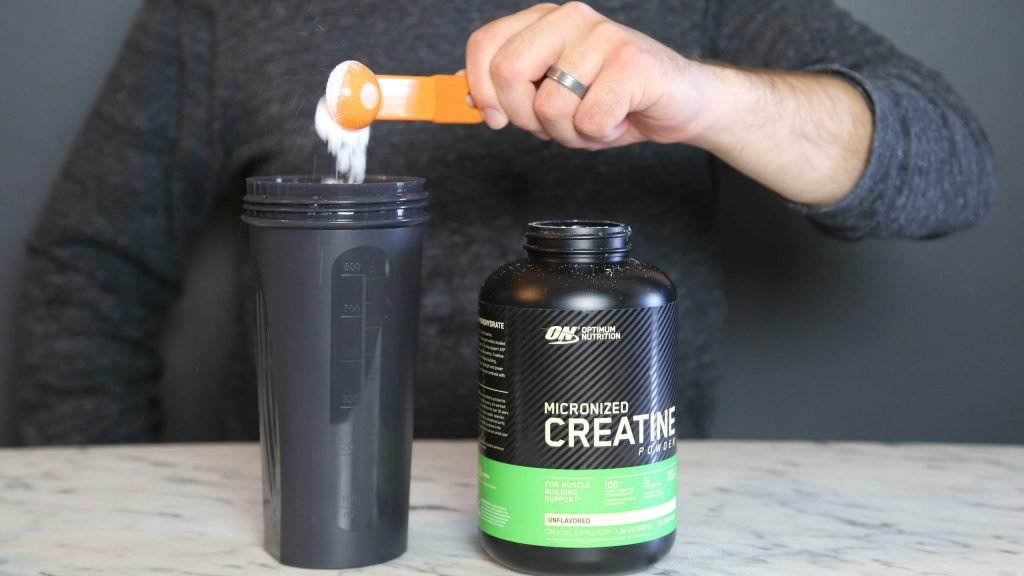
Characteristics and uses of different types of creatine

Creatine is one of the most consumed dietary supplements by athletes worldwide. Today, we will explain the characteristics and uses of different types of creatine.
Nowadays, many people around the world exercise as a hobby or professionally, so many products are made to improve athletic performance. One of the most famous is creatine. Today, let’s look at the types of creatine, its properties, and its uses.
Creatine is a non-protein nitrogenous compound. It is found in muscles and to a lesser extent in the brain. The main food sources are red meat and seafood.
Creatine’s main function is related to ATP synthesis (this substance provides energy during metabolism) and greatly improves athletic performance.
Types of Creatine and Each Characteristics
Being a great dietary supplement, different types of creatine have been made over the years. Each has a different chemical composition to get better results. The different types of creatine that exist in this regard are:
Creatine Monohydrate
It is the most popular creatine supplement for athletes and is in its purest form as other types are derived from it. It is highly effective and has been shown to improve various aspects of athletic training, such as speed and maximal capacity output.
These compounds usually contain no additives. So 88% is creatine and the remaining 12% is water. It has the ability to hydrate cells, reduce cell damage and store them in muscle.

Creatine can help strengthen muscles and increase muscle mass.
Creatine Hydrochloride
As one of the newest types of creatine, there is very little research on it. However, a mixture of creatine and hydrochloric acid produces a stable molecule that is up to 38 times more soluble than creatine monohydrate. Thus, the body absorbs creatine hydrochloride more easily. It also has the same effect and is less likely to cause kidney damage.
Creatine Gluconate
This dietary supplement consists of a molecule of creatine bound to a molecule of glucose. Therefore, intestinal absorption is faster. It also travels through the bloodstream in an effective way. Likewise, glucose penetrates the muscle more effectively than creatine monohydrate, as it produces an instantaneous insulin peak.
Creatine Phosphate (Phosphocreatine)
Phosphocreatine, or creatine phosphate, is a compound found in the body that provides great energy value. However, the storage level is low. It consists of creatine and phosphate in a ratio of 62-38.
It functions like creatine monohydrate, making it perfect for creating lean tissue. It is also an additional energy source and reduces fatigue during exercise.
Creatine Creatine
Also known as alkaline creatine or buffered creatine. It is a mixture of creatine monohydrate and alkalized powder. The main function of this mixture is to prevent the formation of creatinine which raises the pH of the compound to improve absorption and reduce kidney damage.
Creatine has long been believed to give better results than monohydrates. However, a recent study found no significant difference in performance.
Creatine Malate
This compound is more soluble and readily absorbed as a mixture of two or three creatine molecules and malic acid. It also improves endurance, sprint, and strength in athletes without affecting blood pressure or fat levels.
Creatine Ethyl Ester
Creatine ethyl ester is nothing more than creatine monohydrate esterified with alcohol methanol or ethanol. Esterification promotes the passage of the compound through the muscle cell membrane. Therefore, it is absorbed very quickly and a small amount is sufficient.
Creatine Citrate
It is a mixture of creatine 40% and citric acid, the most soluble compound. It also produces a lot of muscle energy thanks to citric acid. It does not cause gastrointestinal problems with very good availability. However, it is more expensive than other types.
Uses and Safety of Creatine by Type
High-performance athletes use creatine to increase speed, endurance, and strength. In fact, experts recommend using it in sports such as rowing, high jump, and soccer. This is because the effectiveness of creatine has been proven several times.
On the other hand, creatine supplementation may improve creatine deficiency syndrome (CCDS), a congenital creatine metabolism disorder in which the body is unable to produce creatine on its own. Although there is not enough scientific evidence, doctors sometimes prescribe creatine for cases of heart failure.
It is safe to take a variety of creatine for a short period of time, as long as you consume at least 5 grams. However, you should talk to your doctor before starting any dietary supplements.
Possible Benefits of Creatine
Various types of creatine have become an athlete’s ally. This is because they all offer the same training benefits, which include:
- provide energy to muscle fibers
- Increase muscle mass and promote muscle recovery
- prevent fat and fatigue
- delay skin aging
The biggest difference between creatine compounds is solubility. More soluble substances are absorbed more quickly and in some cases, intake must be reduced.

As a supplement, creatine is not only used in sports. In fact, it can even help with organic diseases.
Prohibitions against the use of creatine
One of the first things that come to mind when it comes to creatine intake is the potential for kidney damage. If you already have kidney problems or are at high risk of having problems, especially because of excess protein, you should be very careful about taking supplements.
On the other hand, you should avoid taking creatine with medications that are nephrotoxic, which means it can affect kidney function. Consuming both substances at the same time increases the risk of injury.
Another ban on the use of creatine has to do with caffeine intake. The two should not be taken together, as their interaction may reduce the effect of the amino acid on muscle.
Key Differences Between Different Types of Creatine
As explained earlier, the different types of creatine are very similar to each other. They all have the same effect on muscles, and there is not enough scientific evidence to show that one type is more effective than the other.
The difference between these supplements is their solubility and the side effects they each cause. In general, creatine monohydrate derivatives dissolve better and cause fewer gastrointestinal problems. However, you should always consult a professional before consuming.





















